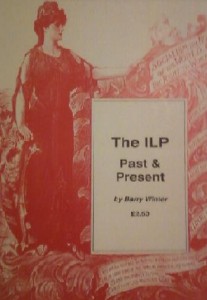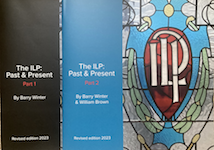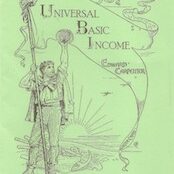1. The Early Years
The Independent Labour Party (ILP) has made a major political contribution to the British labour movement and to the cause of socialism. No assessment of the Left in Britain is complete without some understanding of its record, whether favourable or critical. Even today we live with the ILP’s historical legacy.
 The ILP has remained in continuous existence since its foundation in 1893. But, while its radical spirit has been constant, it has often been transformed by different generations of ILPers striving to make socialism relevant to their times.
The ILP has remained in continuous existence since its foundation in 1893. But, while its radical spirit has been constant, it has often been transformed by different generations of ILPers striving to make socialism relevant to their times.
This short account of the ILP over the last hundred years outlines some of these developments. In doing so, it touches on many issues that socialists still need to debate more thoroughly Our main aim has been to introduce the subject in a way that encourages rather than forecloses any discussion.
Of course, we cannot avoid reinterpretation. The material that we select is bound to reflect and inform the ILP’s current political perspectives. Interpreting our history is a continuous learning process, however. All knowledge is tentative not fixed. In trying to understand the ILP’s past, we do feel that we have some useful insights to offer to those who share our desire to build a socialist society.
This study also covers the ILP’s return to the Labour Party in 1975 as Independent Labour Publications (ILP) and its role in the subsequent years as part of the Labour left. Finally, we conclude with the ILP’s decision to relaunch itself as a political pressure group in its centenary year, 1993, to work for the renewal of socialism.
Making Socialists
Over the years, ILPers have been active in a variety of different political situations. Yet many of the questions facing them are still as relevant to us today. Indeed, the way that present-day socialists respond to these questions, whether consciously or otherwise, will help shape the future prospects of socialism, just as the actions of past generations have influenced the present.
For example, how do we ‘make socialists’ in an anti-socialist environment> How do we sustain a living political community in a hostile world especially when the prospects look bleak? How do we combine fellowship, democracy and heated political debate?
More questions then suggest themselves. What is the relationship between parliamentary and extra-parliamentary struggles? How should socialists respond to feminism and other movements? How should the Left relate to the non-socialist, working class and their organisations, in particular trade unions? And last, but by no means least, how should socialists relate to the Labour Party once it has been established?
From the beginning these issues greatly influenced the founders of the ILP who were politically isolated from the vast majority of people. The pioneers knew that they lived in an environment hostile to socialist ideas but they believed it was possible to overcome this, to change peoples’ outlooks, to ‘make socialists’.
The decision about the party’s name and purpose clearly shows one of their dilemmas. Should the new group choose a name that might widen the gulf between it and the wider working class? That is, should it declare its socialism in its name as well as its purpose?
The result was a classic political compromise. Based upon the delegates’ perceptions of working class opinion, the new party consciously described itself as a party of labour rather than socialism. Then it adopted a resolution declaring its object “shall be to secure the collective ownership of all the means of productions, distribution and exchanges.”
Although it rejected a motion to restrict the party’s aims to fighting elections, the conference did commit itself, however, to seeking “Independent Labour Representation on all legislative, governing and administrative bodies”.
The founders wanted to combine the long-term aim of creating a socialist society to empower the working class with the short-term ambition of winning elections to improve the quality of people’s lives more immediately.
This strategy was not without its problems and its critics then, as it is now. A lot depends upon the weight given to the conflicting pressures of appealing for votes in a conservative culture as opposed to campaigning to transform the political culture itself.
But what sort of people were present at this founding conference and why did they attend? Most of the 120 or so delegates at the Bradford conference were young, working class men largely from the industrial north of England and Scotland. The Scottish Labour Party and the Marxist Social Democratic Federation (SDF) were also represented. There were about 80 delegates present from already-formed, local independent labour parties, plus a handful of trade unions and trades councils delegates.
These local parties had already begun to strive for and achieve independent working class representation on local councils and other local bodies. They described themselves as ‘independent’ to distinguish themselves from earlier working class public representatives linked with the Liberal Party.
Many of the socialists who founded the ILP had been deeply involved in attempts to set up the ‘new unions’ and to unionise previously unorganised workers in the 1880s and 1890s. They backed the gasworkers in Leeds and Bradford, the London dockers, and textile workers in West Yorkshire – the best-known dispute being the five-month strike at Manningham Mills in Bradford that began in December 1890.
After making swift and dramatic advances most of these initiatives foundered because of greater resistance by employers and because large numbers of these workers were sacked in the recession. In assessing these experiences, some argues that trade union struggles, while important, were not enough. That to advance the interests of the working class, indeed to make space for effective trade unionism, independent political activity was also a necessity.
The public figure who best personifies this determined break with Liberalism, from ‘Lib-Labism’ as it was known, was Keir Hardie. He chaired the Bradford conference and the following year the ILP elected him as their first president. Keir Hardie had won a seat in parliament as the Independent Labour candidate for West Ham North in 1892. His newspaper, Labour Leader (formerly The Miner), Was later to become the official journal of the ILP.
Under his influence, the national ILP began to establish itself but not without a struggle. There were many setbacks, especially when ILPers contested elections. For example, in the 1895 general election, Keir Hardie lost his parliamentary seat and no other ILP candidates were successful.
Some of the new party’s critics were quick to pronounce it dead but they underestimated the political commitment and tenacity of the socialist pioneers.
It took some time and a great deal of effort before ILPers were eventually to overcome Lib-Labism. The commitment of many trade unionists to the Liberal Party, which had grown up during the boom years of the second half of the nineteenth century, was an enduring one.
Often they faced a great deal of hostility attempting to do so. When ILPers contested the Barnsley by-election 1897, they came into sharp conflict not only with the Liberal Party but with the Yorkshire miner’s association, whose president was a Liberal MP. So angry were the mineworkers in one pit village that they welcomed Hardie and the ILP candidate with a hail of stones.
Trade union alliance
Influenced by such experiences, many ILPers concluded that it was vital to end their isolation from the trade unions. That if the ILP was too take the socialist message to the working class and to win their votes, it had to forge and alliance with the unions. This decision has left and indelible mark on the labour movement.
To begin wit, it meant campaigning for a broad-based party of labour within the unions. Growing economic instability made this work somewhat easier and trade unionists more receptive. As the century ended and as the recession bit deeper, trade unions came under attack from the capitalist class and from unfavourable court rulings which threatened their existence. In the process, the Liberals proved to be unsympathetic to the cause of labour, showing that they were as much a party of the employers and the establishment as the Tories.
Keir Hardie and the ILP supported trade union action, helping, advising and raising money for strike funds. Largely through the efforts of ILPers active in the unions the policy of the Trades Union Congress (TUC) was changed. In 1899, the TUC finally agreed that it would seek independent working class representation in parliament. Given its earlier hostility to the Left, this marked a significant and hard-earned breakthrough.
Labour party
Over 100 national trade unions (not including the miners) attended the founding conference in London, together with representatives from the ILP, the Fabian Society and the Social Democratic Federation (SDF).
Almost a decade older than the ILP, the Fabian Society was largely of a body of middle class reformers. London was their political centre of gravity. Late converts to the idea of a new party of labour, the Fabians had originally argues for ‘permeating’ the Liberals with their detailed policies for progressive reform. But their views changed as this strategy made little headway.
Even at its birth in 1900 the Labour Representation Committee – which was to become the Labour Party in 1906 – was a compromise. Rejecting the call from the Marxist SDF for a “recognition of the class war” and for the “socialisation of the means of production, distribution and exchange”, the founders instead opted for the ILP’s much looser formulation. Unhappy with this decision the SDF soon broke away.
It was Keir Hardie who moved the successful resolution defining the party’s purpose as setting up “a distinct Labour Group in parliament”. He did so conscious that the trade union leaders were unwilling to consider any wider political commitment.
Thus the fledgling Labour Party was not socialist. Nor could the individual members belong to it directly. To join, it was necessary to belong to either an affiliated trade union or one of the socialist societies. So while this development represented a clear organisational break with the Liberals, radical liberalism as a set of political ideas, rather than collectivism, still remained a major influence within Labour’s ranks.
None the less, an important new chapter in the history of the labour movement and British politics had begun. At the same time, the ILP’s isolation from official trade unionism was ended, but a heavy price was exacted. The unions had a small but clear majority on the national executive committee of the party and the party’s supreme policy-making body, the annual conference, was dominated by the trade union block vote.
Leading ILPers, notably Ramsay MacDonald, provided the Labour Party’s first generation of parliamentary leaders and so began the process of accommodation of labour leaders into the political system. MacDonald was not alone in equating his own personal rise from poverty to political office with the course that Labour should follow. For him the party would win power and achieve socialism through an inevitable, but gradual, evolutionary process.
Meanwhile, the ILP itself provide the main agitational rank and file base of the Labour Party in the constituencies. Its members led the campaigns to win support from the wider working class.
—-
 This is an extract from the original centenary edition of The ILP: Past & Present, published in 1993. The print version is now sold out.
This is an extract from the original centenary edition of The ILP: Past & Present, published in 1993. The print version is now sold out.
The latest revised and updated version, published in 2023 to mark our 130th anniversary, is available to buy in two parts from our publications section.


